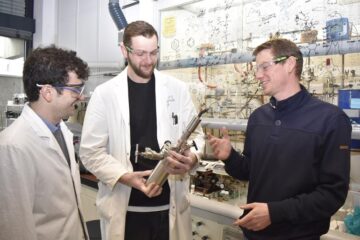Fish livers contain beneficial fatty acids

Fish livers have hardly been used to date, with exceptions such as cod livers, which are used to produce the well-known medicinal oil. In general, fishermen tend to throw fish entrails away into the sea, and if they make it to processing plants they are one of the first fish body parts to be discarded.
However, these organs contain compounds that are beneficial to health, according to a new study by scientists from the University of Almeria, which has been published in the Journal of Food Composition and Analysis.
“The livers of edible fish are a good source of long-chain polyunsaturated fatty acids (LCPUFA), especially those in the omega 3 family, such as eicosapentaenoic acid (EPA) and docosahexaenoic acid (DHA)”, José Luis Guil-Guerrero, lead author of the study, tells SINC.
These fatty acids are used to prevent and treat various complaints, such as some kinds of cancer, depression, Alzheimer's disease, schizophrenia, behavioural problems and cardiovascular diseases.
The study focused on 12 kinds of fish that are commonly eaten in south eastern Spain, such as hake, shortfin mako and European pilchard. The livers of the great weever (Trachinus draco) and the European anchovy (Engraulis encrasicolus) were those that showed up the highest levels of LCPUFA (51.4% and 47.9% out of the total fatty acids, respectively).
In addition, all the species had a combination of omega-3/omega-6 acids that was “beneficial for human consumption”, especially in the case of the liver of the blue whiting (Micromesistius poutassou).
“Unfortunately, discarding these livers means that all their nutritional properties are missed”, says Guil-Guerrero, “and if they were used this would also reduce the environmental pollution caused by throwing innards into the water, which is an inherent problem in the fish product processing industry in coastal areas”.
References: Guil-Guerrero, José Luís; Venegas-Venegas, Elena; Rincón-Cervera, Miguel Ángel; Suarez, Maria Dolores. “Fatty acid profiles of livers from selected marine fish species”. Journal of Food Composition and Analysis 24 (2): 217-222, March 2011.
Media Contact
More Information:
http://www.plataformasinc.esAll latest news from the category: Life Sciences and Chemistry
Articles and reports from the Life Sciences and chemistry area deal with applied and basic research into modern biology, chemistry and human medicine.
Valuable information can be found on a range of life sciences fields including bacteriology, biochemistry, bionics, bioinformatics, biophysics, biotechnology, genetics, geobotany, human biology, marine biology, microbiology, molecular biology, cellular biology, zoology, bioinorganic chemistry, microchemistry and environmental chemistry.
Newest articles

Efficient, sustainable and cost-effective hybrid energy storage system for modern power grids
EU project HyFlow: Over three years of research, the consortium of the EU project HyFlow has successfully developed a highly efficient, sustainable, and cost-effective hybrid energy storage system (HESS) that…

Safer alternative for an explosive reaction
The chemical industry has been using a reaction with explosive chemicals for over 100 years – now Mülheim scientists have discovered a safer alternative. The Ritter Group of the Max…

How immune cells communicate to fight viruses
Chemokines are signalling proteins that orchestrate the interaction of immune cells against pathogens and tumours. To understand this complex network, various techniques have been developed to identify chemokine-producing cells. However,…





















